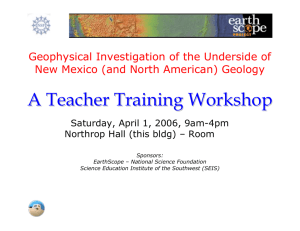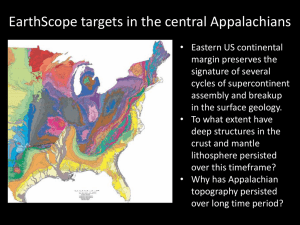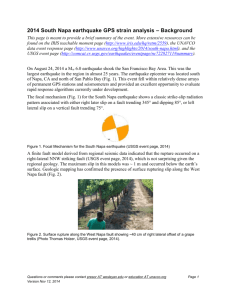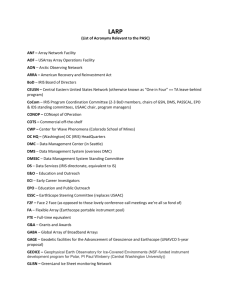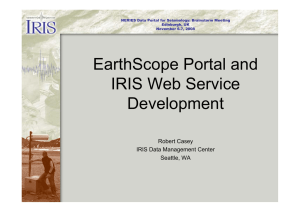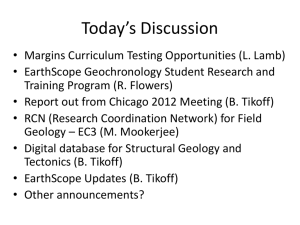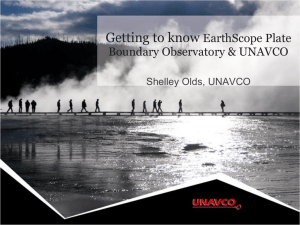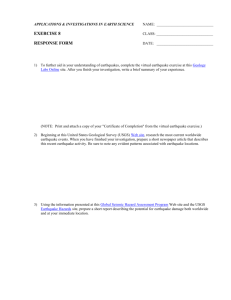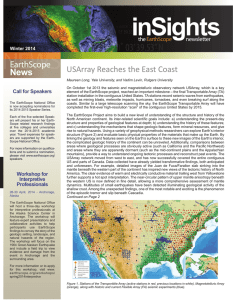pdf of abstract
advertisement
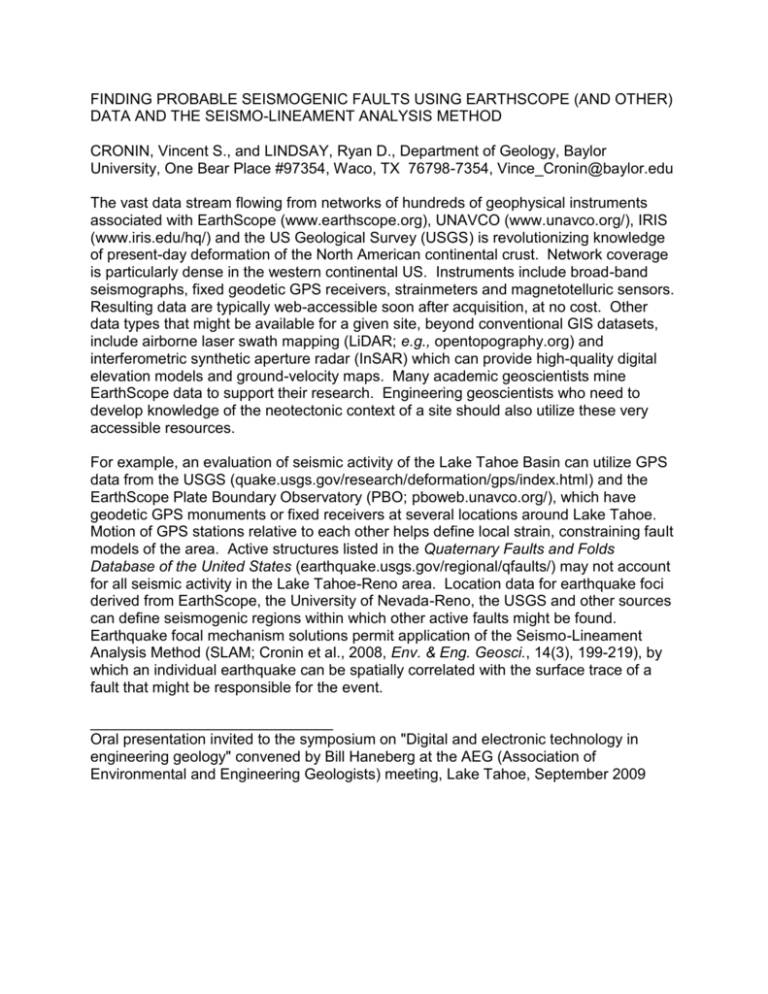
FINDING PROBABLE SEISMOGENIC FAULTS USING EARTHSCOPE (AND OTHER) DATA AND THE SEISMO-LINEAMENT ANALYSIS METHOD CRONIN, Vincent S., and LINDSAY, Ryan D., Department of Geology, Baylor University, One Bear Place #97354, Waco, TX 76798-7354, Vince_Cronin@baylor.edu The vast data stream flowing from networks of hundreds of geophysical instruments associated with EarthScope (www.earthscope.org), UNAVCO (www.unavco.org/), IRIS (www.iris.edu/hq/) and the US Geological Survey (USGS) is revolutionizing knowledge of present-day deformation of the North American continental crust. Network coverage is particularly dense in the western continental US. Instruments include broad-band seismographs, fixed geodetic GPS receivers, strainmeters and magnetotelluric sensors. Resulting data are typically web-accessible soon after acquisition, at no cost. Other data types that might be available for a given site, beyond conventional GIS datasets, include airborne laser swath mapping (LiDAR; e.g., opentopography.org) and interferometric synthetic aperture radar (InSAR) which can provide high-quality digital elevation models and ground-velocity maps. Many academic geoscientists mine EarthScope data to support their research. Engineering geoscientists who need to develop knowledge of the neotectonic context of a site should also utilize these very accessible resources. For example, an evaluation of seismic activity of the Lake Tahoe Basin can utilize GPS data from the USGS (quake.usgs.gov/research/deformation/gps/index.html) and the EarthScope Plate Boundary Observatory (PBO; pboweb.unavco.org/), which have geodetic GPS monuments or fixed receivers at several locations around Lake Tahoe. Motion of GPS stations relative to each other helps define local strain, constraining fault models of the area. Active structures listed in the Quaternary Faults and Folds Database of the United States (earthquake.usgs.gov/regional/qfaults/) may not account for all seismic activity in the Lake Tahoe-Reno area. Location data for earthquake foci derived from EarthScope, the University of Nevada-Reno, the USGS and other sources can define seismogenic regions within which other active faults might be found. Earthquake focal mechanism solutions permit application of the Seismo-Lineament Analysis Method (SLAM; Cronin et al., 2008, Env. & Eng. Geosci., 14(3), 199-219), by which an individual earthquake can be spatially correlated with the surface trace of a fault that might be responsible for the event. _____________________________ Oral presentation invited to the symposium on "Digital and electronic technology in engineering geology" convened by Bill Haneberg at the AEG (Association of Environmental and Engineering Geologists) meeting, Lake Tahoe, September 2009
